originally posted at https://canmom.tumblr.com/post/649811...
Look, we’ve gone several weeks without anything deeply weebish, I have a reputation to maintain here!
Hey friends, I have somehow avoided getting kicked off this website. I have backed up the Animation Night posts locally, though it’s going to take a bit of work to publish the archive on my giþub site!
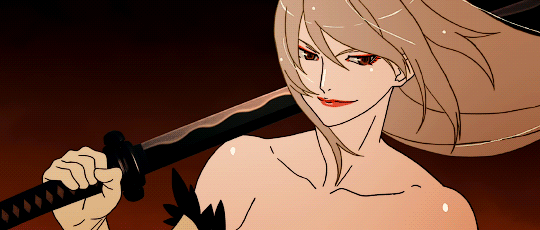
So, what’s this week about? Studio SHAFT were in their heyday known for two things: the rightly legendary Puella Magi Madoka Magica, which we watched back on Animation Night 10, and is apparently soon to receive a new film… but mostly, the much longer Monogatari series. Starting with Bakemonogatari (2009), this stood out a great deal (and did a lot to establish the SHAFT style): a distinctive blend formal experimentation, dense literary allusions, tight blink-and-you’ll miss it editing with creative use of text, and a wry, discomforting sense of humour.
Monogatari entered the world as a series of light novels by the startlingly prolific Nisio Isin (or NisiOisiN as he prefers it!), centred on a boy named Koyomi Araragi who falls into the orbit of a long succession of supernaturally-afflicted girls. Though that premise probably makes it sound sorta harem-adjacent, and Araragi does get together with one of said girls by the end of Bake-, what I’ve seen of it primarily treats this premise more as a framing device for quite varied supernatural stories; some more horror-oriented, some more comedic. Each entry in the series is titled a pun in the template of [something]monogatari, after a traditional literary form that connotes similarly to ‘tale’. Typically these pormanteau with the kanji 物 (mono, roughly just ‘thing’), so…
- 化物語 Bakemonogatari (after 化物 bakemono meaning monster)
- 偽物語 Nisemonogatari (after 偽物 nisemono meaning counterfit)
- 猫物語 Nekomonogatari (not really a pun, just 猫 neko meaning cat lol)
- 傾物語 Kabukimonogatari (傾 meaning slope, with afaict a very unusual reading presumably to bring to mind kabuki theatre? or the flamboyant kabukimono samurai gangs? i don’t get this one)
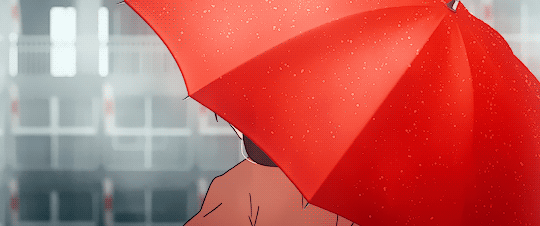
I can’t say too much about the light novel series, or how it compares with others of the genre, beyond that it’s reputed to be very wordy! I do know the task of adapting this fell into the hands of directors Akiyuki Shinbo and Tatsuya Oishi at SHAFT, and they evidently wanted to make something rather avant-garde!
Some of their ideas included things like attempting to capture the interiority of a character by blacking out the screen as if for blinking with ‘black’ or ‘red’ scenes:
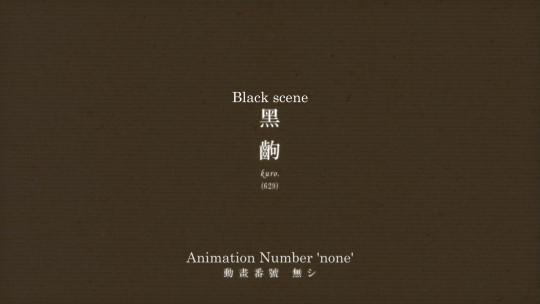
…which along with the editing gives the whole production a distinctive rhythm. Other tricks involve extensive use of typography (e.g. flashing up a definition for a few frames), editing to kabuki sounds (each episode beginning with the an accelerating series of beats with passages from the original novel alongside them), and heavy use of geometric patterns and digital effects in the photography: gradients, stark silhouettes, a very stylised modern world yet strangely sterile and empty of people beyond the MCs. They would moreover do unusual things like using real photographs in backgrounds to create constant variation.
And while the drawing count wasn’t unusually large or anything like that - quite the opposite, often there would be almost entirely static, lingering scenes - even those static talking heads scenes would be shot with an unusual pose or composition to make it interesting. Then at key moments, they would drop some really innovative, heavily impactful key animation, such as this legendary fight scene [continued, cw gore, incredible sequence ^^] by Hironori Tanaka, Genki Matsumoto, Gen’ichiro Abe and Ryo Imamura, which made full use of the protagonist’s healing factor.
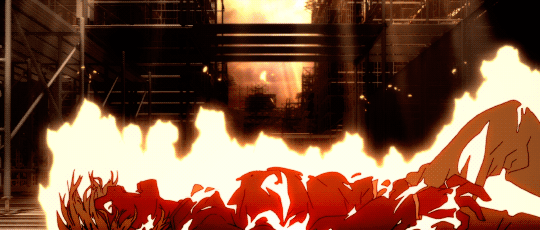
This approach proved a hit, and they were set to make many, many more adaptations of Monogatari. For a detailed retrospective on the series and its influences, kVin has you covered. (Literally I would be totally at sea without this guy lol.)
Starting in 2011, Oishi went to work on the film series, 傷物語 Kizumonogatari (which we could translate as ‘Would Tale’), which was released from 2016-17, telling the first part of the story as a prequel to Bakemonogatari. Although the production was delayed years thanks to Oishi’s ambition, leaving the main series in the hands of an at first much less experienced Tomoyuki Itamura, the final result seems to have paid off, at least going by kVin’s enthusiasm…
The biggest fan of NisiOisiN’s prose is NisiOisiN himself, and so the Monogatari series is renowned for being verbose by both fans and critics. Kizumonogatari is written as the chaotic stream of consciousness of Koyomi Araragi, but Oishi decided to do away with narration and monologues entirely; he took a book that exists inside the mind of a character and tried to make all his feelings explicit and yet portrayed in an unobtrusive way. Not dropping any relevant details without outright stating anything was by all means a crazy idea. And what’s even more outrageous is that he succeeded with his elegant but thoroughly insane solution – eventually at least, I wouldn’t be surprised if he had to redraw his storyboards countless times to achieve it. The Show, Don’t Tell principle has become a bit of a poisonous idea on the internet thanks to reductive fans interpreting it as a rule rather than a powerful approach, but this film pulls it off to an extreme that shouldn’t even be possible.
For a very detailed blow by blow of the various creative things being done, you can read more here.
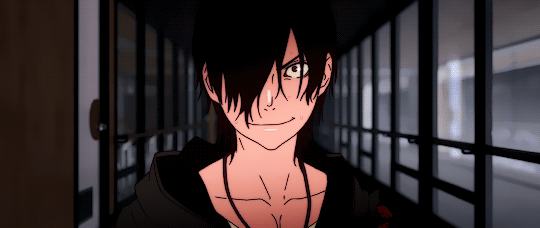
Unlike the more static TV series, these films are carried throughout by some frankly incredible kagenashi (unshaded) character animation, full of intense expression and inventive touches. These lively animation designs consciously contrast with the (apparently somewhat controversial) decision to set everything in realistic CGI backdrops - which do not attempt to look cel shaded or painted at all, but it seems to fit a production like this much better than the overly-shiny cars in Psycho-Pass, and fits the studio’s habit of being ahead of the curve in adopting digital tech.
So what’s all this in service of telling? In Kizu-, Araragi gets his first encounter with a supernatural girl in the form of (deep breath) the vampire Kiss-shot Acerola-orion Heart-under-blade. Moved to offer his blood up to save her from vampire hunters, he finds himself made a vampire thrall tasked with retrieving her lost limbs.
As far as content: some gore is p much a given in this scenario, but heads up that Monogatari is also known for its improbable fanservice shots. In terms of artistic intent, this is perhaps another element in drawing us into the subjectivity of a teenage boy. And in terms of what to expect, it definitely sounds like these are sometimes used, as in here, in a way designed to discomfort rather than gratify the audience.
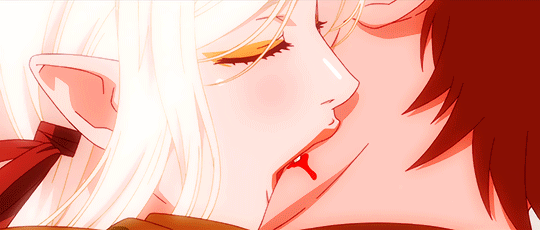
My impetus for picking this one out is a fascinating series of staff interviews that were translated on Sakuga Blog over the past month. Something that got this much attention, and kVin’s obvious immense enthusiasm - not to mention the clips picked out! - definitely got my interest. I’m looking forward to seeing it all together.
With the density of allusions and complex typography, this series is quite a challenge to subtitle - but luckily various groups have risen to the challenge over the years. In this case we have a kind of improbably sophisticated sub by Commie, who went to the trouble of not just matching all the fonts and such but even animating the colour changes to match the typography in the series…
Luckily for Animation Night scheduling, most of these movies are pretty short - just over an hour typically - so we should easily be able to get through all of them in one night. Animation Night 51 will begin at 7pm UK time, 3 hours from this post, at the usual spot - twitch.tv/canmom!
Comments